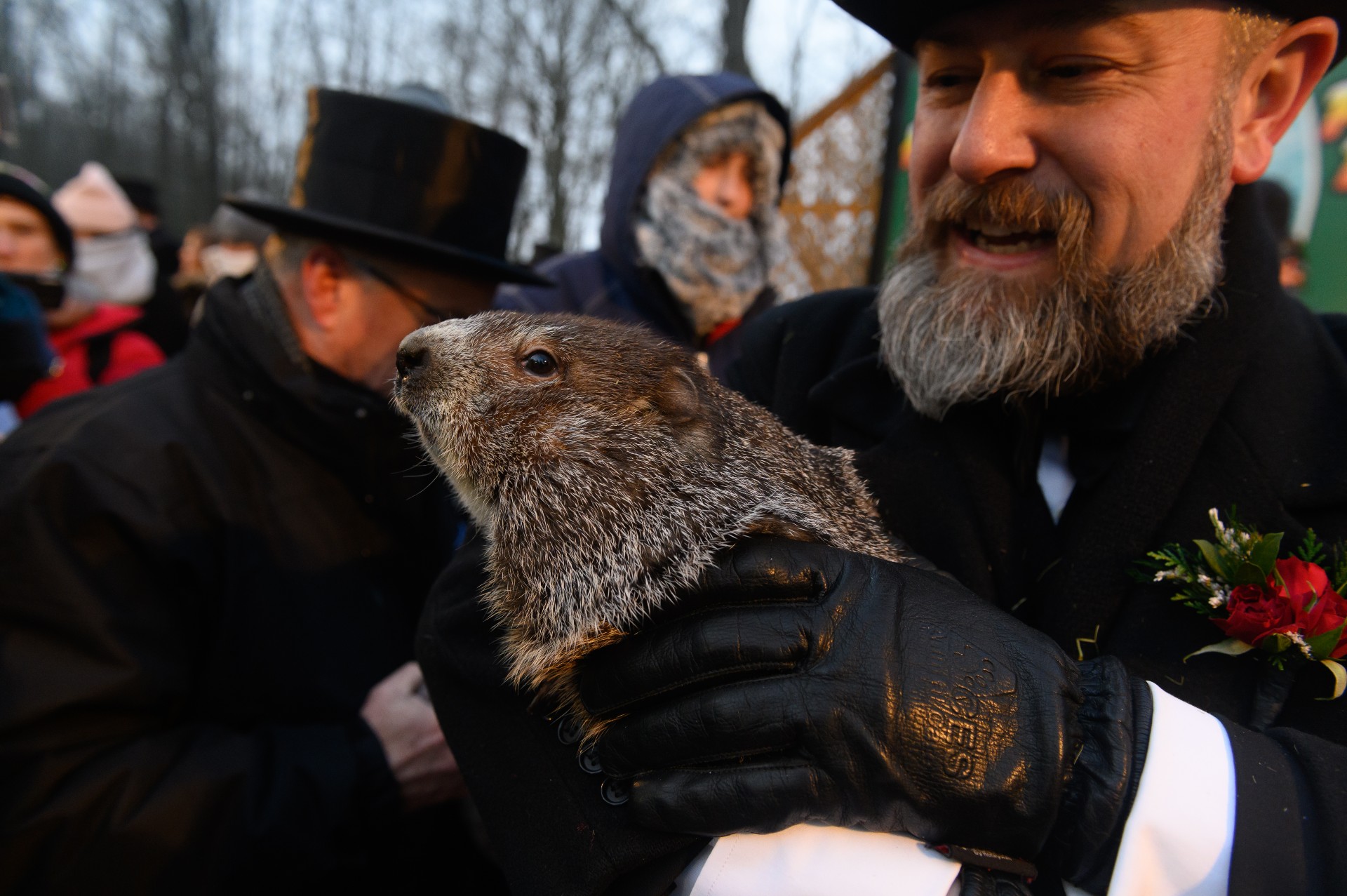Saturday (Feb. 4), not Groundhog Day, is winter's actual midpoint

Feb. 2 is upon us once again.
And especially if you're in my line of work — a meteorologist — you know that this is the day that everyone looks to Punxsutawney, Pennsylvania for a forecast of whether we will see a continuation of winter, or whether we will enjoy an early spring. That forecast of course comes not from a person, but from a groundhog. And as such, Feb. 2 has become known as Groundhog Day.
And yet ... this day originally was known as Candlemas; the 40th day since Christmas. As the old saying goes:
"If Candlemas be fair and bright, Come, Winter, have another flight. If Candlemas bring clouds and rain, Go, Winter, and come not again."
Related: When is the Winter Solstice and what happens?
So how did a groundhog get involved? According to History.com, the first official celebration of the Groundhog Day took place on Feb. 2, 1887. This inaugural celebration was the idea of Clymer Freas and took place in Punxsutawney, Pennsylvania.
And today, Bill Murray notwithstanding, should a certain groundhog named Phil see his shadow, we'll see six more weeks of winter (actually 6½). If he doesn't see his shadow, then winter is over. According to Punxsutawney's Groundhog Club, Phil, after making the prediction, speaks to the Club's top-hatted President in "Groundhogese", which only the current President can understand, and then his prediction is translated for the entire world.
Breaking space news, the latest updates on rocket launches, skywatching events and more!
By the way ... according to Stormfax.com, as of 2022 Punxsutawney Phil has made 127 predictions, with an early spring (no shadow) having been forecast just a mere 20 times (15.7%). This site also states (without evidence or corroborative references) that as of 2022, Phil's predictions have proved correct only about 39% of the time.
Halfway done on Saturday
Although thought of as the "traditional" halfway point of the winter season, Groundhog Day actually falls a couple of days short.
Winter's midpoint will occur this week on Saturday (Feb. 4) at 4:36 a.m. EST or 1:36 a.m. PST. But although the altitude of the sun has been slowly climbing and the length of daylight has been increasing since the winter solstice on Dec. 21, any changes up to this point have been relatively subtle.
However, from now through early May, the increasing altitude of the midday sun and its corresponding lengthening of the daylight hours will become more and more apparent; for at no other time of the year do these two values rise so markedly.
For example: On the first day of winter at Denver, Colorado, sunset occurred at 4:38 p.m. and the length of daylight (from sunrise to sunset) reached a minimum of 9 hours and 21 minutes. On Saturday, Denver sees the sun set at 5:23 p.m. with a mere 57 additional minutes of daylight having accumulated since Dec. 21.
But by Mar. 20th — the date of the vernal equinox — the length of daylight in Seattle will have increased by 110 minutes since Feb. 4th. And because daylight saving time begins on Mar. 12th this year, by Mar. 20th, the sun will be setting well after 7 p.m. (7:11 p.m. to be exact) from the Mile High City.
Temperature-wise, we've bottomed out
Interestingly, for many northern locales, long-term records indicate the first four days of February are the coldest of the winter. But average daily temperatures rise rapidly thereafter, so that by the last week of the month they are higher than any day in January. Meteorologists, in fact, consider that the winter season is over at the end of February; they consider "meteorological winter" to be defined by the three coldest months of the year: December, January and February.
So for all those winter weary souls, take heart: We're about to turn the corner. In the days and weeks to come, you'll more readily be able to sense the greater amounts of daily light and see the more northerly position of the afternoon sunsets on the horizon. And soon the weather will correspondingly respond as well.
As for the groundhog forecast: To see or not to see — the shadow knows!
Joe Rao serves as an instructor and guest lecturer at New York's Hayden Planetarium. He writes about astronomy for Natural History magazine, the Farmers' Almanac and other publications. Follow us on Twitter @Spacedotcom and on Facebook.

Joe Rao is Space.com's skywatching columnist, as well as a veteran meteorologist and eclipse chaser who also serves as an instructor and guest lecturer at New York's Hayden Planetarium. He writes about astronomy for Natural History magazine, Sky & Telescope and other publications. Joe is an 8-time Emmy-nominated meteorologist who served the Putnam Valley region of New York for over 21 years. You can find him on Twitter and YouTube tracking lunar and solar eclipses, meteor showers and more. To find out Joe's latest project, visit him on Twitter.

